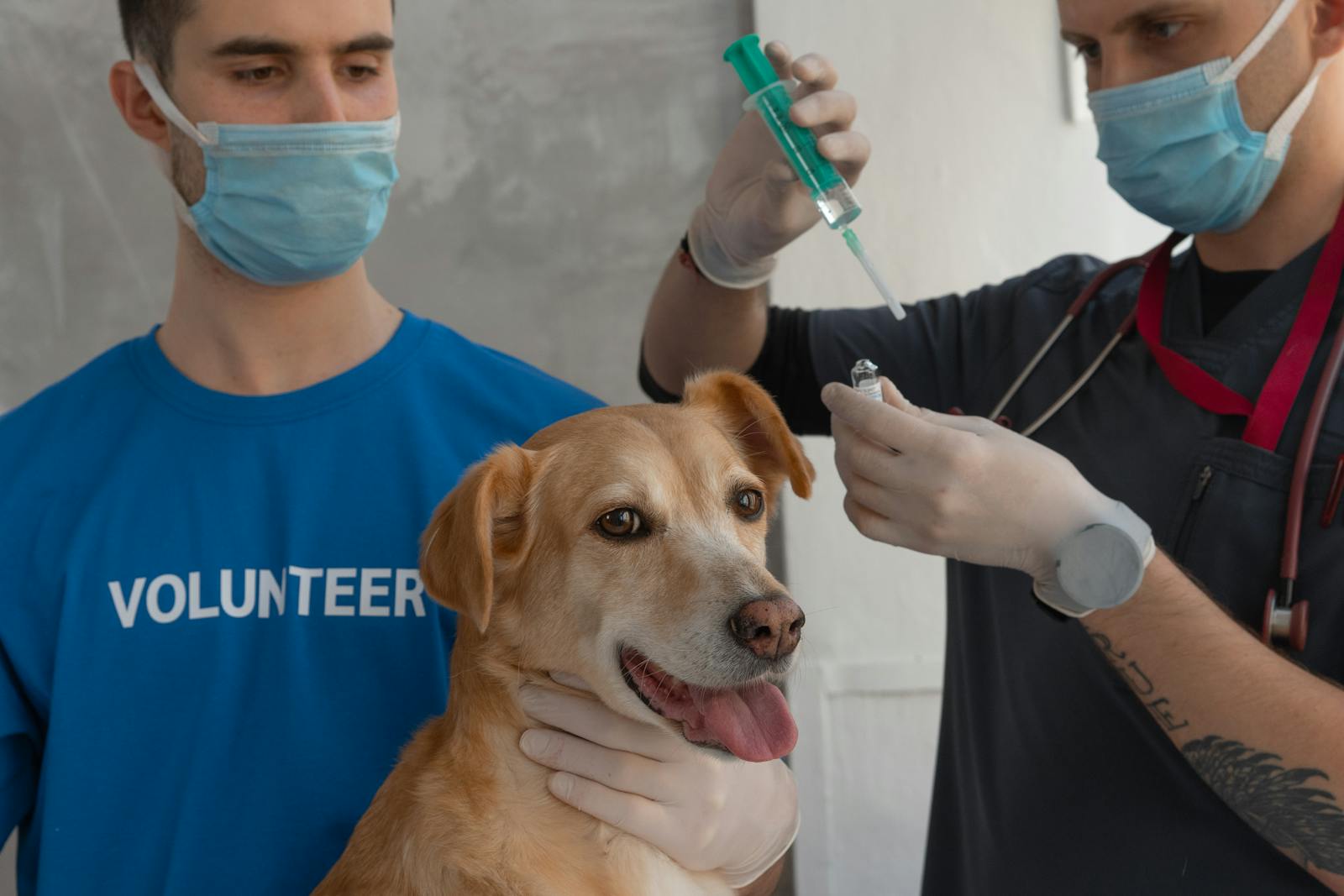Pet Taxes: What Every Owner Needs to Know Navigating Pet Lease Laws: A Guide for Renters and Landlords
Understanding Pet Taxes: An Introduction
As a pet owner, you may already be familiar with the joys and responsibilities that accompany caring for your furry friends. However, there’s another aspect of pet ownership that often flies under the radar: pet taxes. While taxes may not be the most thrilling topic in the world, understanding pet taxes is essential for responsible pet ownership and compliance with local laws. In this post, we will delve into what pet taxes are, their purpose, and how they vary from one location to another, ultimately helping you to navigate these financial obligations seamlessly.
What are Pet Taxes?
Pet taxes, often referred to as animal licensing fees, are local government levies imposed on pet owners to fund various services related to animal control and welfare. Typically, these taxes require owners to register their pets—usually dogs and sometimes cats—annual fees may vary depending on the type of pet, local regulations, and the pet’s spaying or neutering status.
The Purpose of Pet Taxes
Pet taxes serve several essential functions in local governance:
- Funding Animal Services: The revenues generated from pet taxes often go directly toward funding animal control and welfare services, including shelters, rescue programs, and veterinary care for stray or abandoned animals. This helps create a healthier community for both pets and people.
- Encouraging Responsible Pet Ownership: By requiring pet registration, local authorities can keep better track of pet populations, promote responsible ownership, and ensure that pets are vaccinated against preventable diseases. Licensing requirements often also aid in reducing stray animals’ population by encouraging spaying and neutering.
- Promoting Public Safety: Pet taxes and registration contribute to public safety by ensuring that pets are vaccinated and controlled. This reduces the number of undomesticated animals on the streets and minimizes the risks of attacks or disease outbreaks.
- Enhancing Community Services: Funds raised through pet taxes can be used to develop parks for pets, community education about animal care and welfare, and programs that increase awareness of responsible pet ownership.
The Implications for Pet Owners
For pet owners, pet taxes can come with several implications. Here’s what you need to know:
- Annual Costs: Pet taxes can add an annual expense to pet ownership. Depending on where you reside, these costs may range from $10 to over $100 per pet. Some municipalities offer discounts for spayed or neutered pets, which can help reduce your total expenses.
- Legal Requirements: Noncompliance with pet tax regulations can lead to fines or penalties. It’s essential for pet owners to familiarize themselves with local laws to ensure they meet all requirements and avoid any unnecessary fees.
- Importance of Licensing: Licensing your pet not only fulfills a legal obligation but also offers benefits such as access to community resources and protection for your pet. In the case of lost pets, licensed animals are often returned to their owners more quickly as they carry tags or microchip information.
- Variability Across Locations: The rules and fees associated with pet taxes are not universal; they can differ significantly based on your city, county, or state. For instance, major cities like New York or Los Angeles may have higher fees compared to smaller towns. Understanding local regulations will help you plan accordingly.
How Pet Taxes Vary by Location
Pet taxes can vary widely not only in terms of dollar amounts but also in terms of structure and regulation. Here are a few examples of the differences across locations:
- Urban vs. Rural Areas: Urban areas often have stringent pet taxation and licensing requirements due to higher pet populations and the associated costs of animal control. Rural areas might have lower fees or different regulations, reflecting their lower population and fewer animal services.
- State Variations: Some states mandate pet licensing, while others leave it entirely up to local jurisdictions. If you travel or move frequently, it’s wise to check the pet tax requirements of each area.
- Discounts and Exemptions: Some cities offer discounts for spayed/neutered pets, senior citizens, or low-income families. Additionally, certain jurisdictions may exempt service animals from licensing fees altogether.
Navigating Pet Taxes: Key Takeaways and Action Steps
Understanding the ins and outs of pet taxes is vital for responsible pet ownership. Here are a few actionable tips to ensure you’re compliant and make the most of your pet’s taxation requirements:
- Research Local Laws: Start by checking your local government’s website or contacting your local animal control agency to understand your area’s specific regulations, fees, and deadlines.
- Budget Accordingly: Factor pet taxes into your overall pet care budget to ensure you’re financially prepared each year.
- Take Advantage of Discounts: If your locality offers reduced fees for licensed and spayed/neutered pets, be sure to take advantage of these discounts.
- Stay Informed: Keep up-to-date with any changes in local regulations regarding pet taxes or licensing requirements to avoid fines.
Conclusion
In summary, pet taxes are an important aspect of responsible pet ownership that contributes significantly to animal welfare and public safety. By understanding what pet taxes are, their implications for pet owners, and how they vary by location, you can navigate this often-overlooked responsibility more effectively.
If pet ownership is a part of your life, consider taking action today! Do your research, budget for taxes, and ensure your beloved companion is licensed and up to date with local regulations.

The Significance of Pet Registration
Once you’ve grasped the foundational aspects of pet taxes, it’s time to explore another crucial component of responsible pet ownership: pet registration. Registering your pet with local authorities not only helps you comply with legal requirements but also unlocks a multitude of benefits that can enhance the community and the welfare of our furry friends. In this section, we’ll delve into the vital importance of pet registration—its impact on pet populations, community support services, and lost pet recovery.
Understanding Pet Registration
Pet registration is the process of officially recording your pet’s identification with your local government. This typically involves obtaining a license for your pet, which may include fees and proof of vaccinations. While these requirements can vary greatly depending on your location, the underlying benefits remain consistent.
Legal Requirements and Benefits of Pet Registration
- Compliance with Local Laws: In many municipalities, pet registration is a legal mandate. Owning an unregistered pet can result in fines or penalties. Compliance not only protects you from fines but also contributes to greater adherence to public safety standards fostered by local authorities.
- Improving Community Pet Services: The revenue collected through registration fees often provides much-needed funds for local animal control services, shelters, and even community pet parks. This influx of resources enables municipalities to improve animal welfare services and create a healthier ecosystem for pets and their owners.
-
- Enhanced Facilities: Licensed funding assists in the development of better facilities, such as dog parks and veterinary clinics, which benefits the entire community.
- Community Education Programs: Registered pets often help local governments run educational outreach programs, teaching responsible pet ownership and care.
- Control of Pet Populations: Pet registration plays a pivotal role in controlling pet populations within communities. By requiring pets to be registered and thus accounted for, local authorities are better equipped to manage the number of stray and abandoned animals.
-
- Spaying and Neutering Programs: Registration often goes hand-in-hand with spaying and neutering initiatives, further mitigating the issue of overpopulation.
- Tracking Trends: By monitoring registration data, local governments can identify trends in pet ownership, such as spikes in certain breeds, which allows for targeted care and resource allocation.
- Facilitating Lost Pet Recovery: One of the most significant advantages of registering your pet is the high probability of being reunited with a lost animal. Registered pets typically carry identification tags or are microchipped, making it much easier for local authorities and shelters to contact pet owners quickly when their pets are found.
-
- Increased Chance of Return: A pet with a license is likely to be returned to its owner faster than an unregistered animal. According to the American Society for the Prevention of Cruelty to Animals (ASPCA), 93% of lost dogs and 75% of lost cats are recovered due to microchipping and registration.
Steps to Register Your Pet
If you’re ready to take this important step in responsible pet ownership, here are some actionable tips:
- Gather Necessary Information: Before registering your pet, have key details ready, including proof of vaccination, a description of your pet, and your contact information.
- Check Local Regulations: Visit your local government’s website or consult your animal control agency to understand the specific registration requirements, costs, and any time constraints.
- Complete Registration in a Timely Manner: Make sure to register your pet promptly once they reach the required age. Many localities have specific deadlines depending on your pet’s age and vaccination history.
- Keep Records Updated: If you move or your contact information changes, it’s crucial to update your registration details to avoid losing your pet and being unreachable during crucial moments.
Conclusion
In summary, pet registration is more than just a regulatory obligation; it’s a vital step that contributes to improving community services, controlling pet populations, and facilitating lost pet recovery. As a responsible pet owner, ensuring that your furry friends are registered creates a direct positive impact on both your neighborhood and the wider animal welfare community.

Types of Pet Taxes
Pet taxes can manifest in various forms, and while each type may apply differently depending on your location, they all contribute to the overarching goal of responsible pet ownership and community welfare. In this section, we’ll explore the different types of pet taxes, their implications for pet owners, and how they can impact your finances.
1. Licensing Fees
One of the most common forms of pet taxation is licensing fees. Most municipalities require pet owners to register their dogs and occasionally their cats. The fees usually vary based on several factors, including:
- Type of Pet: Dogs often incur higher fees than cats, with some localities offering tiered pricing depending on the dog’s breed or weight.
- Spaying/Neutering Status: Many areas provide discounted rates for spayed or neutered pets. For instance, the licensing fee may be $10 for spayed/neutered pets compared to $30 for intact animals.
Financial Impact:
While licensing fees might seem nominal, they can quickly add up for multiple pet owners. For example, a family with three dogs could face annual costs of $30 to $90 just for licensing. Moreover, if you fail to register within the required period, you may incur additional late fees or fines, further straining your budget.
2. Increased Property Taxes
In some regions, pet ownership may contribute to increased property taxes. This situation is especially prevalent in areas with stringent animal control programs to manage pet populations effectively. Local governments may impose these taxes to cover the costs of animal shelters, veterinary services, and community programs focused on responsible pet ownership.
Financial Impact:
The amount can vary greatly depending on your location. For example, a property tax increase of even a small percentage can amount to hundreds of dollars annually. In urban settings with higher pet populations, these increases can be even steeper, affecting overall housing affordability.
3. Special Assessments or Fees
Some local governments implement special assessments or fees in addition to regular taxes to fund specific animal-related services like pet education programs, emergency rescue efforts, and pet-friendly parks.
Financial Impact:
These assessments can appear as periodic charges added to your tax bill. For instance, a one-time assessment of $50 per household to support a community spay/neuter initiative may not seem daunting at first. However, if your locality implements multiple assessments throughout the year, the cumulative effect can place additional financial burdens on pet owners.
4. Breed-Specific Taxes
Certain locations may have breed-specific taxes aimed at regulating the ownership of certain breeds deemed dangerous or aggressive. These taxes often require owners to pay higher registration and insurance fees for specific breeds known to have a history of violence or aggression, such as Pit Bulls or Rottweilers.
Financial Impact:
These breed-specific fees can significantly increase costs for owners of those breeds. For example, while a typical licensing fee might be $15, a breed-specific fee could jump to $50 or more annually, which can create a financial barrier for families interested in adopting these dogs.
5. Penalties for Noncompliance
Failing to adhere to pet tax regulations can lead to penalties or fines that vary widely by municipality.
Financial Impact:
For instance, in many cities, pet owners who do not license their pets may face fines ranging from $50 to $200 or more. This expense is in addition to any back fees for the missed licensing periods, emphasizing the importance of staying compliant with local regulations.
Final Thoughts on Pet Taxes
Understanding the various types of pet taxes can help pet owners make informed financial decisions and avoid unexpected expenses. While pet taxes often go unnoticed, their impact can accumulate over time, leading to significant costs for pet owners.
Whether you are budgeting for licensing fees, preparing for potential increases in property taxes, or addressing special assessments, being proactive can make a considerable difference in your overall financial planning.

Exemptions and Reductions for Pet Owners
When considering the financial responsibilities of pet ownership, it is essential to navigate not only the annual costs associated with pet taxes but also the potential exemptions or reductions available to certain groups. Understanding these benefits can make pet ownership more accessible, particularly for service animal handlers, low-income families, and senior citizens. In this section, we’ll explore the various exemptions and reductions you may qualify for, how to apply, and what eligibility criteria you need to meet.
Types of Exemptions and Reductions
- Service Animals: Many jurisdictions exempt service animals from pet licensing fees entirely. A service animal, as defined by the Americans with Disabilities Act (ADA), is not merely a pet but a dog trained to perform specific tasks for a person with a disability. This exemption underscores the essential role these animals play in ensuring the well-being and independence of their handlers.
- Low-Income Families: To alleviate the financial burden on pet owners, numerous localities offer reduced fees or waiver programs for low-income families. This initiative promotes responsible pet ownership by encouraging families who may otherwise struggle to manage pet costs to keep their animals while contributing to community welfare.
- Senior Citizens: Many communities recognize the additional challenges that seniors may face while managing the costs of pet ownership. Consequently, several cities provide discounts or exemptions from pet taxes for senior citizens, allowing older adults to enjoy companionship without the stress of exorbitant fees.
- Spayed or Neutered Pets: Some areas offer reduced licensing fees for pets that have been spayed or neutered. This incentive not only helps pet owners save money but also supports community efforts to reduce the stray animal population through responsible breeding practices.
How to Apply for Exemptions and Reductions
Applying for exemptions or reductions typically follows a straightforward process. While the specific requirements may vary by jurisdiction, the general steps are as follows:
- Check Eligibility: Start by reviewing your local government’s guidelines. Information may be available on your city or county’s website or through your local animal control office. Determine if you fall under any of the categories for exemptions—service animal, low-income, senior, or spayed/neutered pet.
- Gather Documentation: Most exemption applications will require you to provide specific documentation. For example:
- Service Animals: You may need to furnish proof of disability and detailed documentation or certification indicating the animal’s status as a service animal.
- Low-Income Families: Proof of income—such as tax returns, pay stubs, or benefit verification—might be required to demonstrate eligibility.
- Senior Citizens: A valid identification card showing proof of age (usually 65 years or older) may be necessary.
- Spayed or Neutered Pets: Documentation from a veterinarian confirming that your pet has been spayed or neutered is typically required.
- Complete the Application: Obtain the exemption application from your local animal control agency or their website. Complete all relevant sections, ensuring that you attach any required documentation.
- Submit Your Application: Follow the guidelines for submitting your application. Some jurisdictions allow online submission, while others may require physical mail or an in-person visit.
- Follow Up: After submitting your application, consider following up with your local agency to ensure it has been received and is being processed.
Navigating Eligibility Criteria
Understanding the eligibility criteria for exemptions and reductions can be vital in ensuring a smooth application process. Here are some key points to keep in mind:
- Residency Requirements: Often, you must be a resident of the jurisdiction where you’re applying for the exemption. Make sure your address is registered with your local government to avoid complications.
- Time Limits: Applications for exemptions or reductions may have specific submission periods, especially ahead of annual licensing periods. Staying informed about deadlines will help avoid missing out on potential savings.
- Verification Process: Be prepared for a verification process, where local authorities may reach out for additional information or clarification regarding your application.
Conclusion
By taking advantage of available exemptions and reductions, pet owners can experience significant financial relief while fulfilling their responsibilities. Whether you are the owner of a service animal, part of a low-income family, or a senior citizen, exploring these options can lead to both monetary savings and peace of mind.

Pet Lease Laws Overview: Understanding Pet Ownership in Rental Situations
As a pet owner living in a rental property, navigating the intricate web of pet laws can feel both overwhelming and confusing. Every landlord has specific sub-policies concerning pets, which can significantly affect your experience as a tenant. Understanding these laws, however, is crucial to ensuring a smooth relationship with your landlord and a happy living situation for you and your furry friends. In this section, we will explore key terms and concepts regarding pet ownership in rental environments, including pet deposits, pet rent, and how landlords can enforce pet policies.
Key Terminology and Concepts
Before delving into the specifics of pet lease laws, it’s essential to clarify some crucial terms that you may encounter:
- Pet Deposits: This is a one-time, refundable fee paid to the landlord to cover any potential damage caused by your pet during your stay. Landlords typically set the amount of the pet deposit, which can vary from $200 to $1,000 or more, depending on factors such as the property’s size and the type of pet.
- Pet Rent: In addition to the pet deposit, some landlords may charge pet rent—a monthly fee charged to tenants who have pets. This additional expense can range from $25 to $100 per month, depending on the landlord’s policies and property type. It’s pivotal to factor this information into your overall budget.
- Pet Policies: These are the specific rules and regulations set by landlords regarding pet ownership. Policies often dictate what types of pets are allowed (e.g., breed restrictions), the maximum number of pets permitted, and any additional fees required. Understanding your landlord’s pet policies is crucial to maintaining compliance within your rental agreement.
Legal Framework Governing Pet Ownership in Rentals
Laws surrounding pet ownership in rental properties can vary widely by location. Here’s a breakdown of how these laws typically function:
- State Regulations: While many states empower landlords to set their own pet policies, some have enacted laws that prohibit blanket bans on pets in rental properties. For example, in California, landlords cannot outright refuse pets—they must allow pets unless there are particular reasons cited, such as allergy concerns or specific damage records.
- Lease Agreements: Your lease agreement will be the primary source governing your rights and responsibilities regarding pet ownership. Ensure to read this document carefully and clarify any ambiguous terms. If your lease is silent on pet policies, the landlord may have limited grounds to charge deposits or rent related to pets.
- Discrimination Laws: It’s crucial to note that pet policies must comply with Fair Housing Laws, which include regulations about service animals and emotional support animals. Landlords are typically prohibited from charging additional deposits or rent for service animals, and they are required to provide reasonable accommodations.
Enforcing Pet Policies: What Landlords Can Do
If you’re a pet owner or considering becoming one in a rental property, understanding how landlords enforce pet policies can help avoid conflicts:
- Inspection Rights: Many lease agreements grant landlords the right to conduct inspections of rental units, which can include checking for pet-related damages or compliance with pet policies. Regular inspections can help landlords enforce their rules but should be conducted in accordance with state laws and regulations.
- Pet Violations: If landlords find that you are violating pet policies—be it through having more pets than allowed, not having paid a pet deposit, or failing to clean up after the pet—consequences can range from warnings to eviction. It’s vital to maintain clear communication with your landlord regarding any changes or needs.
- Conflict Resolution: Should any disputes arise regarding pet policies, many landlords and tenants seek to resolve issues through mediation or discussion. It’s beneficial to foster a good relationship with your landlord to facilitate a smoother resolution process.
Practical Tips for Pet Owners in Rentals
Navigating pet lease laws can seem daunting, but armed with the right information, you can ensure a positive pet ownership experience in your rental property. Here are some actionable steps:
- Clear Communication: Always communicate openly with your landlord about your pet situation. Inform them ahead of moving in if you plan to bring a pet, and be prepared to discuss any potential fees or deposits.
- Read Your Lease: Carefully review your lease agreement. Make sure you understand the pet deposit and any additional fees or requirements for pet ownership.
- Document Everything: Keep records of all communications with your landlord regarding pet policies. This can be crucial in case there are any disputes or misunderstandings.
- Consider Pet Insurance: Pet insurance can help cover potential damage or vet expenses related to your pet, providing peace of mind and potential savings in unforeseen circumstances.
Conclusion
A solid understanding of pet lease laws and the pertinent terms associated with pet ownership in rental situations is fundamental for a harmonious coexistence with your landlord. By familiarizing yourself with critical concepts such as pet deposits, pet rent, and enforcement mechanisms, you can ensure compliance and joyfully integrate your pet into your living situation.

Understanding Renters’ Rights Regarding Pet Ownership
As a renter and pet owner, it can sometimes feel like you’re navigating a minefield when it comes to both your furry friend and your living situation. From lease agreements to local tenant laws, there’s a lot to unpack when it comes to pet ownership as a renter. Understanding your rights in this domain is crucial not just for maintaining peace with your landlord but also for ensuring a happy environment for you and your pets. In this post, we will explore the rights of renters concerning pet ownership, including negotiating pet clauses in leases and understanding local tenant laws.
Know Your Rights as a Renter
Understanding the rights you have as a renter, especially regarding pet ownership, is foundational. These rights can vary significantly depending on local laws, the type of tenancy agreement you have, and the specific terms set by your landlord.
- Pet-Friendly Policies: Some landlords have strict no-pet policies, while others may allow pets with certain restrictions. Familiarize yourself with the lease agreement you signed; it should clearly outline the pet policy. If pet allowances aren’t specified, or if they appear overly restrictive, you may have the opportunity to negotiate.
- Local Tenant Laws: Many municipalities have specific laws aimed at protecting renters, including clauses that may limit a landlord’s ability to impose unreasonable pet restrictions. Check local tenant protection laws to see what rights are in place in your area. This information can usually be found on your city or county’s housing agency website.
- Emotional Support Animals: If your pet serves as an emotional support animal, you may have additional protections under the Fair Housing Act. This federal law requires landlords to accommodate tenants with disabilities and their service animals, which may include emotional support animals, regardless of pet policies.
Negotiating Pet Clauses in Leases
When it comes to negotiating pet clauses in your lease agreement, proactive communication with your landlord is essential. Here are some actionable tips to make this process smoother:
- Be Transparent: Discuss your pet openly with your landlord. Share any relevant information such as your pet’s behavior, training status, and medical records, including vaccination proofs. This shows your landlord that you are a responsible pet owner.
- Offer a Pet Deposit: If your landlord is hesitant about allowing pets, consider offering a pet deposit or additional rent to cover potential damages. This can be a strong incentive for landlords concerned about liability or damage to their property.
- Get Everything in Writing: Once an agreement is reached, ensure all pet provisions are documented in your lease. This may include any additional fees, pet size restrictions, or breed specifications.
- Stay Flexible: In negotiations, consider the landlord’s perspective. If they have valid concerns, see if you can reach a compromise, perhaps by suggesting a trial period for pet ownership.
Importance of Proactive Communication
Maintaining open lines of communication with your landlord is key to creating a harmonious rental experience. Here are a few ways to effectively communicate:
- Regular Check-Ins: Don’t wait for issues to arise; be proactive. Schedule periodic check-ins if allowed. This can build trust and rapport, making it easier to discuss potential concerns related to your pet.
- Address Concerns Promptly: If your landlord raises an issue regarding your pet – whether it’s noise, mess, or safety – address it immediately. Demonstrating your commitment to resolving issues can reinforce your landlord’s confidence in your responsibility as a pet owner.
- Educate Your Landlord: If your landlord is unfamiliar with pet ownership responsibilities, offer insights into your practices. Share your pet’s training routine or discuss how you plan on managing waste. Education can often alleviate tensions.
- Document Interactions: Keep a record of all communications regarding your pet. This will provide clarity in case any disagreements arise in the future. Documentation can also help you assert your rights if needed.
Local Resources for Renters
Local resources can be invaluable in helping you navigate your rights as a pet-owning renter. Here are a few avenues to explore:
- Tenant Advocacy Groups: Many areas have organizations dedicated to helping renters understand their rights. These groups can offer guidance and support regarding negotiations with landlords and understanding local laws.
- City Housing Authorities: Visit your city’s housing authority website to gather information on existing tenant protection laws and resources for pet owners.
- Legal Aid Services: If you feel your rights are being violated, seek out legal aid services in your area that specialize in tenant rights. Many organizations offer free consultations to help renters understand their unique situations.
Conclusion
In summary, knowing your rights as a renter concerning pet ownership is essential. Understanding local tenant laws, carefully negotiating lease clauses, and engaging in open communication with your landlord can pave the way to a more harmonious living environment for both you and your pet.

Responsibilities of Landlords: Managing Pet Policies and Legal Requirements
When it comes to pet ownership in rental properties, the dynamic between landlords and tenants can become a bit complicated. Landlords hold certain responsibilities when it comes to managing pet policies and navigating the associated legal requirements. This blog post will outline the key responsibilities that landlords have, while also highlighting best practices for ensuring fair treatment of tenants and reasonable accommodation requests.
Understanding Legal Requirements
Landlords are bound by local, state, and federal laws that outline their responsibilities when it comes to pet policies. Understanding these legal requirements is crucial for managing properties effectively and remaining compliant.
- Fair Housing Act: Under the Fair Housing Act (FHA), landlords must make reasonable accommodations for tenants with disabilities. This includes allowing service animals, which can be a significant consideration for pet policies. It’s essential for landlords to differentiate between service animals, which are trained to perform tasks for people with disabilities, and emotional support animals, which may not possess the same training but still provide essential emotional support.
- State and Local Regulations: In addition to federal laws, landlords need to familiarize themselves with state and local regulations governing pet ownership in rental properties. Many jurisdictions allow landlords to establish their own pet policies, yet certain restrictions could apply, such as breed-specific legislation or limits on the number of pets permitted.
- Lease Agreements: Clearly outline pet policies in lease agreements. This should include specific terms regarding pet types allowed, deposits, fees, and maintenance responsibilities. A well-documented lease helps minimize disputes and sets clear expectations for both parties.
Developing Clear Pet Policies
To manage pet-related issues effectively, landlords should develop clear and comprehensive pet policies that address various aspects of pet ownership in rental properties.
- Pet Deposits and Fees: Collecting a pet deposit can protect landlords from potential damage caused by pets. This deposit should be reasonable and comply with state guidelines to avoid pushing tenants away. Make sure to clearly communicate the terms of the deposit and when it will be returned.
- Breed Restrictions: Some landlords may choose to implement breed restrictions based on insurance requirements or concerns about safety. However, it’s essential to consider fair treatment of all tenants. A blanket ban on specific breeds may lead to claims of discrimination, so it’s advisable to assess each request on a case-by-case basis.
- Pet Limitations: Setting a limit on the number of pets allowed in a rental unit can help maintain order and manage noise. Determine a reasonable limit based on the size of the unit and the likelihood of disturbances for other tenants.
- Maintenance Responsibilities: Outline pet owners’ responsibilities regarding waste removal, noise control, and any damage that may occur due to pet ownership. Establishing clear guidelines fosters accountability and encourages responsible pet ownership.
Best Practices for Fair Treatment
Ensuring fair treatment for all tenants, including those with pets, is a priority for landlords. Implementing the following best practices can help in promoting a positive landlord-tenant relationship.
- Be Proactive and Communicative: Maintain an open line of communication with tenants regarding pet policies. Encourage them to share any concerns or requests for reasonable accommodation before they become contentious issues.
- Respond to Accommodation Requests: When tenants with disabilities request accommodations for their service or emotional support animals, landlords should respond promptly and respectfully. Engage in an interactive process to understand the needs of the tenant and seek mutually beneficial solutions.
- Educate Tenants: Provide resources or educational materials regarding responsible pet ownership within the community. Promote collaboration between tenants, which can create a harmonious living environment for everyone.
- Regular Inspections: Conduct regular property inspections to ensure compliance with pet policies while respecting tenants’ rights to privacy. This can help address any potential issues early on and maintain the property’s condition.
Conclusion: Key Takeaways and Action Steps
Landlords play a crucial role in managing pet policies while navigating legal requirements that affect both their responsibilities and tenant relationships. Here are some actionable steps for landlords to consider:
- Familiarize Yourself with the Law: Understand the Fair Housing Act, state regulations, and local laws to ensure compliance with pet policies.
- Create Clear Pet Policies: Develop and document clear guidelines regarding deposits, limits, and responsibilities related to pets.
- Implement Fair Practices: Engage with tenants regarding pet ownership and respond to accommodation requests respectfully.
- Encourage Open Communication: Maintain an open dialogue to foster a positive relationship with tenants and create a thriving community.
Navigating pet policies can be a complex landscape for landlords, but with the proper knowledge and established practices, it’s entirely possible to develop a pet-friendly rental environment that benefits all parties involved.

Staying Informed: The Necessity for Pet Owners and Landlords
As we’ve established, staying informed about local pet laws and taxes is crucial for both pet owners and landlords. By understanding these regulations, you not only ensure compliance but also foster a responsible pet ownership culture and create a harmonious living environment for all residents, both two-legged and four-legged.
Importance of Local Ordinances
Understanding local ordinances is the first step to responsible pet ownership and effective rental practices. Local governments implement these laws to address specific community needs and issues. Here’s why it’s vital:
- Community Awareness: Local laws are reflective of community concerns. For instance, if there’s a high incidence of pet-related complaints or issues, local governments may revise regulations to address those, ensuring the safety and well-being of all residents.
- Responsiveness to Changes: Pet laws can change. Municipalities might introduce new fees or completely shift licensing requirements based on current statistics, trends, or community feedback. Regularly checking local ordinances keeps pet owners informed of their responsibilities.
Seeking Legal Advice
While you can access a wealth of information online, the complexities surrounding pet laws can sometimes necessitate more in-depth understanding. Consulting a legal professional or animal law expert can provide clarity and guidance. Here’s why seeking legal advice might be beneficial:
- Customized Guidance: Laws can often have specific nuances that might not be evident through general research. Lawyers specialized in animal laws can help you navigate these intricacies and ensure compliance with the latest legal standards.
- Understanding Rights and Responsibilities: A legal expert can elucidate your rights as a pet owner as well as your landlord’s rights. This understanding is particularly valuable in rental situations where pet ownership can lead to disputes over deposits or lease agreements.
Responsible Pet Ownership and Rental Practices
Whenever a pet owner moves into a new rental property, there’s an important dialogue to be had about pet laws and ordinances. This is crucial for:
- Establishing Ground Rules: Clear communication between pet owners and landlords can prevent misunderstandings and conflicts down the road. Discuss pet size, breed restrictions, and any additional fees that may be required for pet ownership.
- Promoting Animal Welfare: Understanding local regulations can help pet owners act responsibly, ensuring that pets are licensed, vaccinated, and, when appropriate, spayed or neutered. This not only benefits the community but also enhances the quality of life for the pet.
Taking Initiative
Pet owners need to be proactive in staying informed. Here are actionable steps:
- Regularly Review Local Ordinances: Make it a habit to check local government websites or community bulletins quarterly for any changes or updates to pet regulations and taxes.
- Join Community Forums: Engage in local pet owner groups, either online or in person, to discuss shared experiences and insights regarding pet regulations.
- Communicate with Your Landlord: Keep your landlord informed about any changes in your pet’s status—such as new vaccinations or changes in breed status—to ensure compliance with your lease agreement.
Conclusion
By staying informed about local pet laws and taxes, both pet owners and landlords can mitigate risks, ensure compliance, and foster a responsible community. The importance of continuous education regarding pet-related ordinances cannot be overstated, as it plays a significant role in enhancing the quality of life for pets and their owners alike.
news via inbox
Nulla turp dis cursus. Integer liberos euismod pretium faucibua





